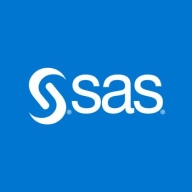

Toad Data Point and SAS Enterprise Guide are both popular data analysis tools. While users favor SAS Enterprise Guide for its advanced features, Toad Data Point is appreciated for its cost-efficiency.
Features: Toad Data Point offers intuitive navigation, strong SQL querying capabilities, and straightforward usability. SAS Enterprise Guide provides comprehensive analytics, robust reporting features, and more extensive functionalities.
Room for Improvement: Toad Data Point could improve performance speed, stability, and user interface. SAS Enterprise Guide could benefit from reducing its complexity, enhancing its learning curve, and improving user support documentation.
Ease of Deployment and Customer Service: Toad Data Point is easier to deploy and benefits from responsive customer service. SAS Enterprise Guide requires a more involved setup process and receives mixed feedback on support.
Pricing and ROI: Toad Data Point offers a lower setup cost and quicker ROI, attracting budget-conscious users. SAS Enterprise Guide, with its higher initial cost, provides substantial long-term value through its advanced analytics capabilities.


SAS Enterprise Guide is an intuitive statistical analysis solution that enables users of all backgrounds to engage in statistical analysis.
Users can create and deploy customized tasks and dynamic content that best meet their needs. Interactive content can easily be shared on the cloud and the internet.
Benefits of SAS Enterprise Guide
Some of the benefits of using SAS Enterprise Guide include:
Reviews from Real Users
SAS Enterprise Guide is a statistical analysis tool that stands out among its competitors for a number of reasons. Two major ones are the solution’s intuitive nature and the suite of functionalities that it offers. SAS Enterprise Guide makes it easy for users who lack a background in statistical analysis to create workflows. The solution enables users to customize and configure queries without requiring them to have a background in coding. SAS Enterprise Guide has a wide variety of functionalities. It is highly flexible and gives users the ability to complete many different tasks.
The head of analytics at a communications services provider writes, “I think that the ease of use is the most valuable feature. I know SQL. I even taught SQL. But new people who come to the tool without in-depth knowledge of SQL or people who do not have an analytics background can still use the tool. It is very easy for these new users to climb the learning curve using SAS Enterprise Guide because of the way it was created with ease-of-use in mind. It is well-oriented to the business user. In no time new users are able to create workflows. Obviously, it is best if they have some basic knowledge of how things work in doing analysis — like the concept of joins, data profiling, and maybe some other SQL-related concepts. But the key here is they do not need to know how it is coded or the exact commands. All the features are available within Enterprise Guide through a drag-and-drop interface so queries can be built without extensive knowledge of how that works behind the scenes. The ease-of-use makes the tool valuable even for someone who is near the beginner level.”
Monica B., an SAS Application Architect at a computer software company, writes, “It has a lot of functionalities. We can build ETL processes. There are clients who are using SAS Enterprise Guide to build ETL processes. They have a SAS-based program that is scheduled to run at a certain frequency to produce some reports for the business. It is a very useful tool for ETL unit tests and functional tests. You can also do data science projects in SAS Enterprise Guide by using different statistics. During my MBA, we used SAS Enterprise Guide for our statistics course.”
We monitor all Data Preparation Tools reviews to prevent fraudulent reviews and keep review quality high. We do not post reviews by company employees or direct competitors. We validate each review for authenticity via cross-reference with LinkedIn, and personal follow-up with the reviewer when necessary.